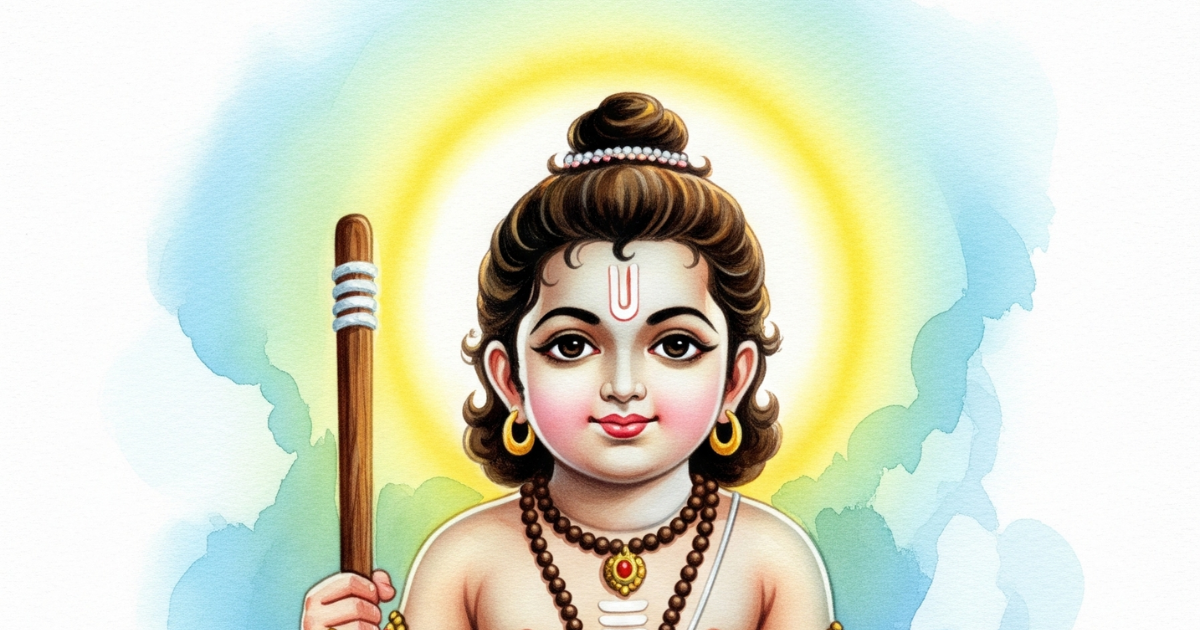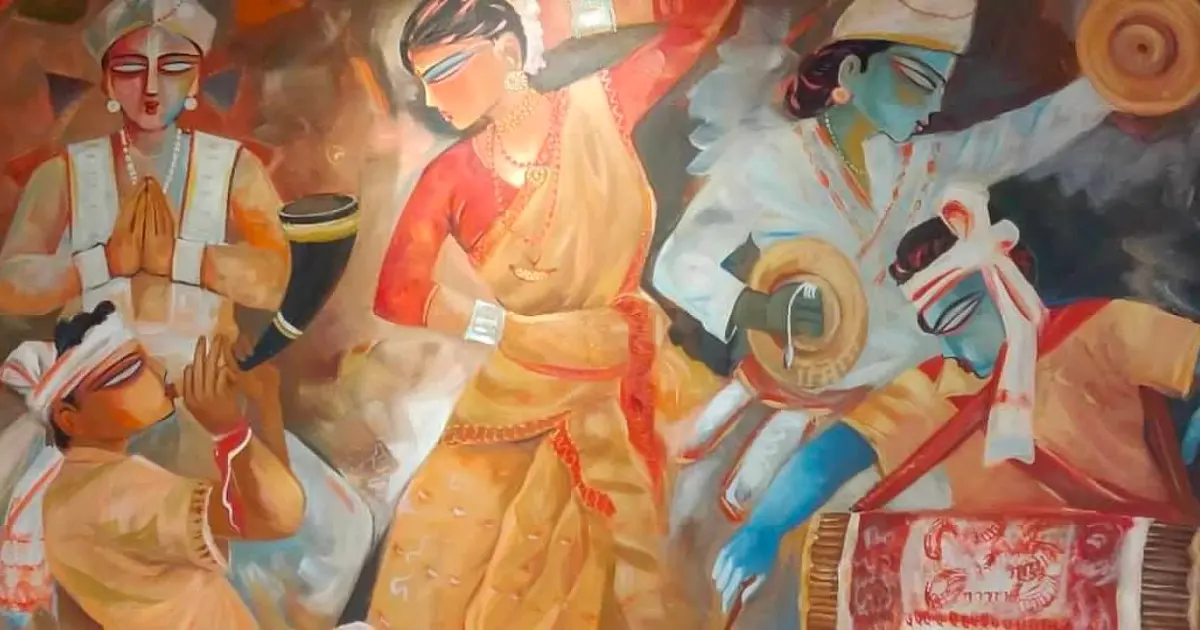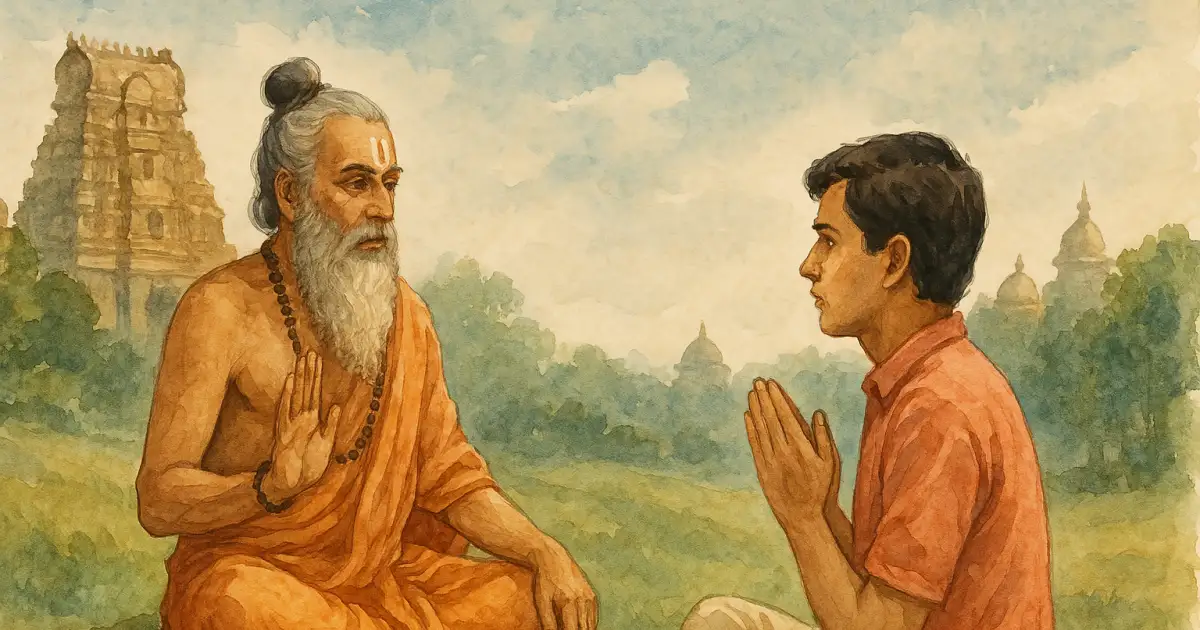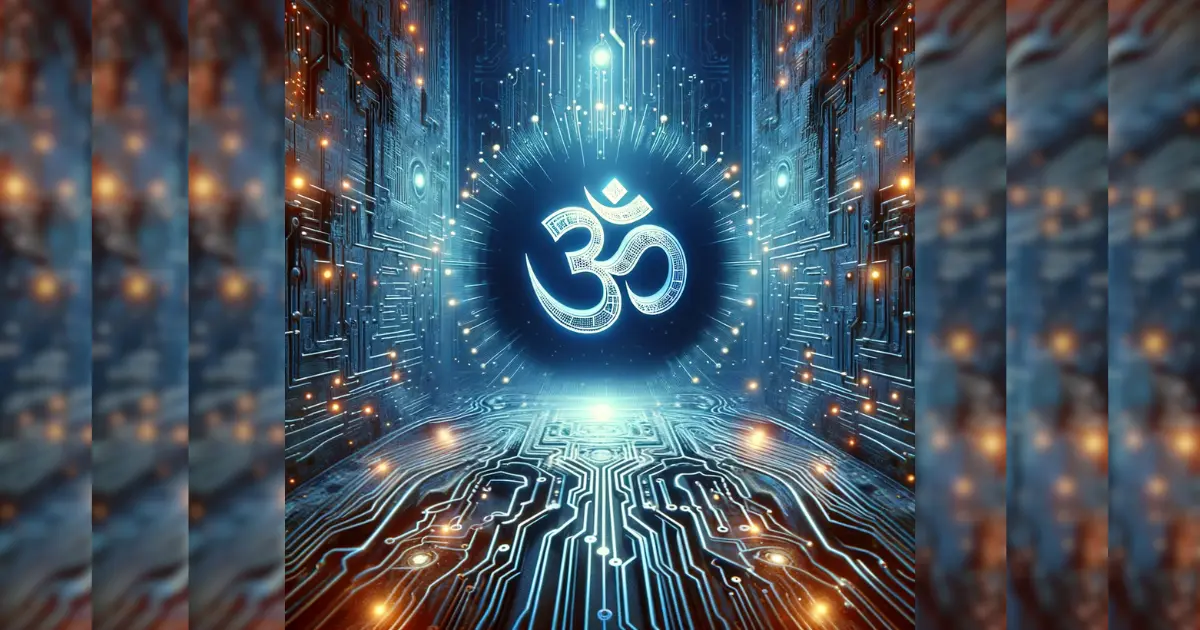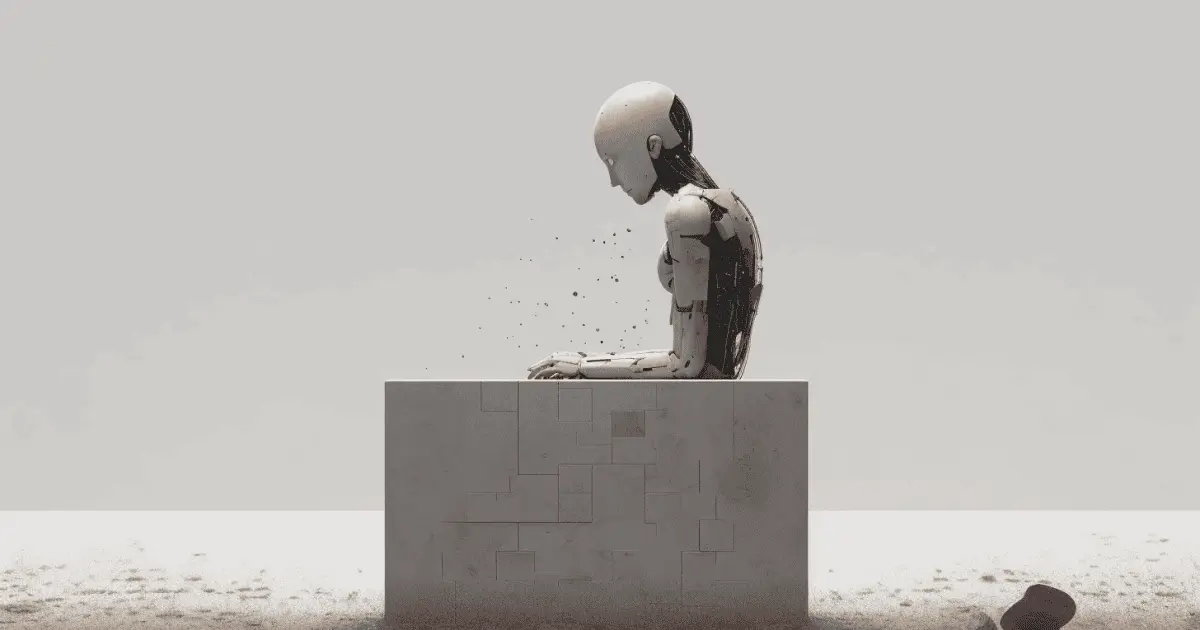Oṇam celebrates the appearance of the Vāmana avatāra, Śrī Viṣṇu’s fifth avatāra, who incarnated to restore the cosmic order.
According to the Śrīmad Bhāgavatam 8.18.5:
श्रोणायां श्रवणद्वादश्यां मुहूर्तेऽभिजिति प्रभु: ।
सर्वे नक्षत्रताराद्याश्चक्रुस्तज्जन्म दक्षिणम् ॥ ५ ॥
On the day of Śravaṇa-dvādaśī [the twelfth day of the bright fortnight (śukla pakṣa) in the month of Bhādra], when the moon came into the lunar mansion Śravaṇa at the auspicious moment (muhūrta) of Abhijita, the Lord appeared in this universe. Considering the Lord’s appearance was very auspicious, all the stars and planets, from the Sun to Saturn, were munificently charitable.
Kerala’s ‘Kollavarṣa’ Calendar
Oṇam is the state/official festival of Kerala. It is also known as Vāmana Jayanti and Tiru Oṇam/Tiruvoṇam.
Kerala follows the solar calendar known as Kollavarṣa, where months are named after the zodiac (rāśī) the Sun enters. The calendar begins with the Sun's entry into Siṃha rāśī, marking the first month, Chingam (Siṃha), in which Oṇam is celebrated as the New Year.
The Kollavarṣa calendar was established around the 8th century CE, shifting the first month from Meṣa rāśī to Siṃha rāśī for more precise calculations. Kerala does not follow tithi (lunar phases); instead, it bases its calendar on the nakṣatra and the Sun’s rāśī. Kerala also does not observe the Adhika māsa (leap month) system every three to four years. Instead, it balances the calendar annually.
The word ‘Oṇam’ and its perennial association with Vāmana avatāra:
Oṇam or its full form ‘Tiruvoṇam’ originates from ‘Śravaṇam’, which is the nakṣatra it falls under. It is possible that the change in pronunciation patterns as time passed morphed it into Oṇam.
‘Tiru’ is an honorific title for Viṣṇu.
- In the book ‘Malabar Manual’ by William Logan (Chapter II - the People (e) Manners and Customs, Page 161):
At Oṇam, which is perhaps the greatest national feast in Malabar… Paraśu Raman or Viṣṇu is supposed to descend to earth to see his people happy.
- In the book titled ‘Some Aspects of Kerala and Tamil Literature (Part II)’ by Rao Sahib M. Raghava Aiyangar in 1954-56 (Page 1):
“...it is thus clear that the Oṇam festival is, in essence, a glorification of the achievements of Lord Viṣṇu in one of his avatārs - the incarnation as Vāmana or the Dwarf.
- Vāmana Purāṇa, Chapter 9, Verses 35-39:
The whole earth and earthly beings rejoiced at the birth of Vāmana. Rṣi Kaśyapa gave him a black deer skin, Bṛhaspati gave him the janeu (sacred thread), Vaśiṣṭa gave him the kamaṇḍalu, and the Vedas attended upon him, etc.
- Periyazzhawar, ‘Pathikas and Pallads’:
He describes offerings made to Lord Viṣṇu in the 9th Century CE, during Oṇam. The work also described the feast, the dress, the songs and dances of men and women.
Viṣṇu Sūkta of the Ṛgveda
It describes Viṣṇu as the one who permeates everything. He is the one who measured all the earthly realms where earthly beings reside with his three strides. Hence, he is referred to as ‘Trivikrama’.
Vāmana avatāra is also known as Upendra, or the younger brother of Indra, as they were both born to mā Aditī and ṛṣi Kaśyapa.
In the Ṛgveda, one can also see Trivikrama’s close association with Indra.
Deity Māyōn - Sangam Era (2nd Century BC to 7th Century BC)
The Tolkāppiyam mentions a deity ‘Māyōn’ (the one who is Māyā/ the dark one) of the Mullai (forest) region of Tamiḻakam. This deity is now known as Perumāl̥/Tirumāl (Viṣṇu). Oṇam was the festival when ‘Māyōn’ was worshipped grandly.
The poem Mullaippāṭṭu makes a simile-oriented description of Vāmana avatāra.
As per Maturaikkāñci (verses 590-591), Oṇam was observed when the constellation of Tiruvoṇam (Śravaṇa), which is Viṣṇu’s natal star, falls in the month of Siṃha (Chingam), corresponding to the Tamil month Avani.
King Bali
It is pertinent to mention here that, as per Bhāgavata Purāṇa, Canto 9, Vāmana avatāra takes birth to vanquish asura Dhundhu (son of Madhu-Kaiṭabhas) instead of King Bali.
Now, coming back to the legend of King Bali.
Daitya King Bali was the son of Virocana, who was the son of Viṣṇu’s great devotee, Prahlāda, and the grandson of Hiraṇyakaśipu.
Virocana was chosen as king amongst his brothers as he performed rites and rituals as prescribed by the texts. He is mentioned in the Chāndogya Upaniṣad, Ganeśa Purāṇa, and the Mahābhārata.
In the Chāndogya Upaniṣad (VIII.7.2-8.5), it is recorded that Virocana and Indra had approached Prajāpati to teach them about ‘ātman’ when they heard his proclamation that the one who knows the ātman gains possession of all the worlds and has all desires fulfilled. They stayed there for thirty-two years and practiced brahmacārya.
Prajāpati, at the end of it, told them that what one sees in one’s reflection in the water or mirror is the supreme one — that is brahman, the ātman.
Virocana, the daitya king, took this literally and passed on his interpretation to all the daityas — that only the bodily self is worthy of serving, preserving, and glorifying. Thus, it became the doctrine of the daityas.
We see the same pattern or behavior in Virocana’s mentions in the Purāṇas and Mahābhārata.
However, Indra felt that this wasn’t the complete truth. He persisted and served Prajāpati for another sixty-nine years and was then considered worthy of the true knowledge of ātman — which is the conscious being that transcends waking, dream, and deep sleep states.
This lack of discernment, perseverance, and true understanding of knowledge, which sooner or later takes over, is the reason for the discomfort in handing over anything to the daityas in similar stories from our texts. The overall objective of all the devatā and daitya battles is to maintain the cosmic order in the best possible manner for the benefit of the entire humankind. Might or strength can never be the sole deciding factor.
As per Śukrācārya, King Bali also followed the same doctrine, but he was closer in qualities to his grandfather (Prahlāda) than his father (Virocana). However, he, too, followed the Daitya kings' svadharma and had the long-standing ambition to rule over the three lokas and displace the devatās. Since this was also what his subjects wanted, he was clouded by ego and hunger for hegemony.
King Bali first tried to escape with the urn of amṛta during the samudra manthan, and a fierce battle ensued wherein he was slain by the devatās. However, he was revived by daitya guru Śukrācārya and the Bhṛgus. Then, he went on to establish hegemony over the three lokas and drove out the devatās. King Bali was performing the yajña to maintain his power when Vāmana appeared.
King Bali’s Yajña
Mā Aditī, taking different rūpas, has given birth to the seven avatāras of Viṣṇu in different yugas (Mahābhārata Śānti Parva, Chapter 43, Verse 6).
In the Bhāgavata Purāṇa, Kūrma Purāṇa, Matsya Purāṇa, and Vāmana Purāṇa, mā Aditī clearly stated that she was not performing a penance to Lord Viṣṇu to reclaim Svargaloka for her son, Devarāja Indra (the king of the devatās). It was to restore order (ṛta) to all three lokas, which had been disrupted due to the daityas taking over. The daityas wanted everything that the devatās had and did not even wish to grant the basic coparcener rights to the displaced devatās, who had no place to go.
This also brought along a multitude of other problems; most importantly, the arrangement for continuity of the duties for the entire cosmos in the absence of Sūrya deva, Candra deva, Agni deva, Vāyu deva, Varuṇa deva, etc. It was a very delicate situation for the entire humankind.
Therefore, Lord Viṣṇu, pleased with mā Aditī’s rigorous penance, incarnated as Vāmana. Vāmana, as per the Skanda Purāṇa, proceeded to Vastrāpatha on the Raivataka mountain at a place called Bhṛgukacchaka on the North bank of the river Narmadā (present-day Bharuch in Gujarat).
Here, King Bali performed the yajña under the guidance of Bhṛgus (Bhṛgu was the father of Śukrācārya) and Śukrācārya to maintain his hegemony over all three lokas. Vāmana asked for three steps of land, which he measured with his three mighty steps (Trivikrama/Urukarma), thus destroying King Bali’s yajña.
In some versions, it is also mentioned that Prahlāda himself descended from Vaikuṇṭha to chastize Bali during this episode.
On Bali’s request, Vāmana granted him the boon of being a ‘Cirañjīvī’, and also to come back to earth every year for a round-up of everything, as well as his rulership over the grand abode — Sutala (where Lord Viṣṇu shall be ever present) until the next manavantara, where he would be the next Indra.
Oṇam also celebrates the beautiful relationship between Lord (Viṣṇu) and Bhakta (Bali)
In the Śrīmad Bhāgavatam from 5.24.18 to 5.24.27, it details Sutala, which is the abode of King Bali for this manavantara. Vāmana granted the only wish of King Bali, which was to be with the Lord forever, since all his wealth fell short before the three steps of the Lord and his ego was dissolved.
He understood that the material world was insignificant, and the only way to attain bliss was the love and shelter of the Lord. Vāmana was extremely pleased with Bali’s devotion and honoring of his promise by offering all three lokas without any second thought.
Lord Vāmana resides as the gatekeeper of Sutala and even kicked out Rāvana when he went to attack King Bali.
King Bali was a great devotee of Lord Viṣṇu. He was wealthy and had all the worlds under him. Yet, this story is a clear example that the supreme divine power is unbiased and performs all activities with the sole aim of balancing nature or the cosmic order.
Mahabalipuram
There is no scriptural reference to this particular place in Tamil Nadu being King Bali’s land of rule.
Mahabalipuram was earlier known as Mallapuri/Mallapurikshetram after the ruler Mallesudu (as per the sthala Purāṇa and Brahmāṇḍa Purāṇa’s adhyāya 93-100).
The town later derived its name ‘Mamallapuram’ from its 7th-century Pallava ruler Narasimhavarman I. Being one of the greatest wrestlers and fighters in his realm, the king was also called ‘Mamallan’, meaning ‘Great Wrestler’.
S. Swaminathan, the author of Mamallapuram, a book on the architectural and sculptural achievements of the Pallavas, says that the name ‘Mahabalipuram’ emerged in the Vijayanagara period (14th-17th centuries). There is no direct connection between King Mahābalī and Mamallapuram.
This name further morphed into Mahavalipuram/Mavelipuram. And erroneously, it came to be attributed to King Bali much later.
The Confusion with ‘Balipratipadā’ (which comes 3-4 days after Dīpāvalī/4th day of Dīpāvalī)
Chapter 9 - Kārtikamāsa Māhātmya - Vaiṣnava Khaṇḍa - Skanda Purāṇa mentions of Bali Pratipadā, granted for worship of dānavas:
48-49a. On the fourteenth day in the dark half of the month of Āśvina, on the new-moon day and on the first day (of Kārttika) which is in conjunction with the Svāti constellation, one should take these three days as the festival days of lights.
49b-55. Bali, the great king, was told by Hari, who was delighted by his devotion and generosity, “Welfare unto you. Choose your boon, whatever may be in your mind.”
On hearing these words of Viṣṇu, Bali spoke these words:
“What is there to be requested for, for my own sake? Everything has already been given over by me. For the sake of the general public, I shall request. If you are competent, grant it unto me. Today, the earth was gifted to you who are in the false guise of a Dwarf. Since that has been taken over by you by means of three steps in the course of three days, let there be my rule on the earth for three days, O Hari.”
Bali Pratipadā is celebrated widely in Gujarat as well as the Deccan region.
Historians such as A.M. Kurup and M.G. Sasibhooshan trace the celebration of Oṇam in Madurai and Tirupati many centuries ago to Sangam literature.
Boon by Vāmana avatāra to King Bali
Chapter 10 - Kārtikamāsa Māhātmya - Vaiṣnava Khaṇḍa - Skanda Purāṇa
Formerly, at the beginning of Kṛtayuga, Bali was the great king of dānavas. The earth, as well as his own head, was given to Vāmana by him. At that time, the Lord was delighted and spoke to Bali:
6-8. “O sinless one, since you have given me the earth on the first day in the bright half of the month of Kārttika with great devotion, I am delighted thereby. I shall grant you a boon. O king.”*
After saying this, he granted the boon: “O king, the first tithi of the month of Kārttika shall be known by your name. If devotees take an oil bath, etc., and worship on this day, O king, that shall give everlasting benefit. There is no doubt about it.”
9-12. Ever since then, the Pratipadā Tithi has become very famous around the world.
This great festival that tends to favour asuras has been granted to Bali by a delighted Viṣṇu.
52-55. Thus, every year, one day and one night in the month of Kārttika have been given to the king of dānavas on the earth, as if it were the ideal for him.
Mahābalī as one of the Cirañjīvīs
अश्वत्थामा बलिर्व्यासो हनुमांश्च विभीषण:।
कृप: परशुरामश्च सप्तैतै चिरञ्जीविन:॥
सप्तैतान् संस्मरेन्नित्यं मार्कण्डेयमथाष्टमम्।
जीवेद्वर्षशतं सोपि सर्वव्याधिविवर्जितः॥
aśvatthāmā balirvyāso hanumāṁśca vibhīṣaṇaḥ।
kṛpaḥ paraśurāmaśca saptaitai cirañjīvinaḥ॥
saptaitān saṃsmarēnnityaṃ mārkaṇḍēyamathāṣṭamam।
jīvēdvarṣaśataṃ sopi sarvavyādhivivarjitaḥ॥
— Sapta Cirañjīvī Stōtram
Essence: The remembrance of the eight immortals (Aśvathāmā, Mahābalī, Vyāsa, Hanumān, Vibhiṣaṇa, Kṛpā, Paraśurāma, and Mārkaṇḍeya) offers one freedom from ailments and longevity.
Centre of Celebration
Thrikkakara (Place of holy foot) Vamanamoorthy Temple:
The Thrikkakara Vamanamoorthy Temple is also known as Vāmana-kṣetra since he is the kṣetra devatā. Vāmana was the presiding deity of the Cochin kings, who were patrons of the Thrikkakara Vamanamoorthy Temple and celebrated Vāmana avatāra’s birth tithi (Oṇam) in a grand and royal manner every year.
This Vāmana-kṣetra refers to one of the 108 Vaiṣnava Divya Desam (divyadeśas or divyasthalas - 108 Vishnu and Lakshmi temples detailed by Ālvārs, the Vaiṣṇava poet-saints), located in the topographical division of Malaināṭu (“hill country”), according to the 9th-century Nālāyirativviyappirapantam (shortly Nālāyiram). Malaināḍu is identified with Kerala.
Vāmana-kṣetra/Kuṟuṅkuṭi is mentioned in the Matsya Purāṇa as well as the Mahābhārata during the conversation between Arjuna and ṛṣi Śaunaka.
A few other Vāmana temples (part of 108 Vaiṣnava Divya Desams) elsewhere are:
- Swayambhu Vamanavatara Sri Trivikrama Swamy Temple is located only in a small village named Cherukuru (Pedda Cherukuru) in Prakasam district of Andhra Pradesh.
- Ulagulanda Perumal Temple, Kanchipuram, Tamil Nadu
- Thrivikrama Perumal Temple, Thirukkoyiloor
- Thadalan Temple, Sirkazhi
- Vamana Temple, Eastern Group of Temples, Khajuraho, Madhya Pradesh.
There is also a Vamanapura/Vamanasthali (as per Girnar Māhātmya) near Junagadh, Gujarat.
Legend says that Kerala was created by Lord Parśurāma himself (the sixth avatar of Lord Viṣṇu). The Thiruvallam Śrī Parśurāma Temple on the banks of the Karamanā river, Thiruvananthapuram, is dedicated to Lord Parśurāma. This region along with Konkan, Karnataka, Goa and Maharashtra are known as Parśurāma kṣetra.
This temple is almost two millennia old and houses ancient records of Oṇam celebrations by the kings since 861 CE. An 11th-century inscription during the reign of Bhaskara Ravivarman tells about the Pūradam, Uthradam, and Thiruvoṇam days as auspicious days in the temple.
During the ten days of Oṇam, the deity is dressed up each day as each of the ten avatāras of Viṣṇu - Matsya, Kūrma, Varāha, Narasimha, Vāmana, Paraśurāma, Rāma, Balarāma, Kṛṣṇa, Kalki, and Trivikrama (the giant form of Vāmana) using mainly sandalwood paste, ornaments, and clothing, and is taken out in the Ārāttu procession at the temple.
Ten-day celebration of Oṇam at the Thrikkakara Temple
Onam is a ten day celebration, because it is the biggest festival of Kerala, and it also comes at harvest time. Therefore, there is joy, abundance, happiness and prosperity everywhere.
The ten days are: Atham, Chithirā, Choḍī, Viśākam, Anizham, Thrikeṭṭa, Mūlam, Pūradam, Uthradam, and Thiruvoṇam.
First day - Atham: The festival flag is raised, and processions of the deity are taken out on elephants with drum rolls, folk dancers with decorative masks, music, etc. Historically, the king of Kochi led the procession from his palace to the temple, meeting and greeting his people on the way. At homes, the pūkalam decorations begin.
Second day - Chithirā: People clean and decorate their houses, etc.
Third day - Choḍī: People buy new clothes, etc.
Fourth day - Viśākam: Preparations for grand feast begin.
Fifth day - Anizham: This day is famous for the Vallamkali, a traditional snake boat race held in Kerala’s backwaters, especially in the areas around Aranmula.
Sixth day - Thrikeṭṭa: Families visit their ancestral houses and temples to ask for blessings.
Seventh day - Mūlam: Traditional dance performances like Kaikottikali (dance performed by women) and Pulikali (tiger dance) are held.
Eighth day - Pūradam: The pūkalam is completed.
Ninth day - Uthradam: This is the penultimate day of the festival. In some regions of Kerala, the festivities of Oṇam start full-fledgedly from Uthradam itself. Some people also call Uthradam the first Oṇam and the next day Thiru Oṇam as the second Oṇam. Three conical clay pillars, representing Vāmana mūrti (Thrikkakara Appan or Onathappan), are made and placed in temples or homes on the pūkalam.
Tenth day - Thiruvoṇam: The most important day of Oṇam is celebrated when nakṣatra is Śravaṇa (Thiruvoṇam). People dress in new clothes, offer prayers, and celebrate the day with the grand Oṇam Sādhya/Oṇasādhya (a traditional multi-course vegetarian feast). Devotees visit the Thrikkakara Temple for special prayers.
This marks the end of major Oṇam celebrations, but festivities continue for four more days. During these four days, morning and evening prayers are conducted for Onathappan (Vāmana Mūrti).
- Aviṭṭam (11th day) – Dhaniṣṭha Nakṣatra (Third Oṇam)
- Chathayam (12th day) – Śatabhiṣā Nakṣatra (Fourth Oṇam)
- Pūruruṭṭathi (13th day) – Pūrva Bhādrapada Nakṣatra
- Uthriṭṭathi (14th day)– Uttara Bhādrapada Nakṣatra
- 15th Day – Vāmana’s Return to Vaikuṇṭha
Oṇathappan mūrti is immersed in rivers or the sea, marking the departure of Vāmana. The pūkalam is cleaned, and no further pūjā or feast is performed.
Naivedyam (Ela Aḍā– a special pancake dish steamed in a banana leaf) is offered, following ṣoḍaśopcāra pūjā (16-step tāntrika worship).
Major Rituals/Symbols of Oṇam
- Aṭhapūkalam: Every house has a ten-layered flower bed arrangement that begins from the first day. Each day, a layer of flower arrangement is added/ increased to represent the ten avatāras of Viṣṇu.
- Oṇam Sādhya Feast: A very important part of Oṇam. Traditionally, it celebrates the seasonal vegetables and is eaten on plantain leaves. It can range from nine-course meals to twenty-four-course meals.
- Oṇathappan - Normally, three clay pyramid structures, having four faces and a flat top, known as Thirukkakara Appan (Trivikrama/Vāmana deity), are made during Oṇam celebrations. These symbolize the three steps conquering the three worlds by Vāmana avatāra, and the four faces are the four directions as well as the four puruṣārthas. The pyramids are placed in the pūkalam and worshiped throughout the festival.
References
- Interview with Swami Sharadananda, Chinmaya Mission, on 16.02.25
-
https://www.wisdomlib.org/hinduism/compilation/puranic-encyclopaedia/d/doc242041.html
-
ŚB 8.18.5 - Śrīmad-Bhāgavatam
-
https://archive.org/details/vamana-purana-vaishnava-upa-purana-sanskrit-english-ocr/page/n165/mode/1up?view=theater
-
https://www.wisdomlib.org/definition/kollavarsha
-
https://www.wisdomlib.org/definition/mayon
-
https://archive.org/details/bhavishya-puran-gita-press-gorakhpur/page/n481/mode/2up?view=theater
-
https://archive.org/details/vishnu-purana-sanskrit-english-ocr/page/n254/mode/1up?view=theater&q=aditi
-
https://archive.org/details/kurma-puran/page/n132/mode/1up?view=theater
https://www.wisdomlib.org/hinduism/book/the-skanda-purana/d/doc371651.html
-
Bali Pūjā 2020 date: Bali Pratipadā story and significance - Times of India
-
शतायु होना है तो स्मरण करें इन 7 चिरंजीवियों का...
-
https://www.keralatourism.org/Oṇam/Oṇam-rituals/thrikkakkara-appan-rituals
-
Chapter 9 - Rites to be Performed on Vatsadvādaśī, [...] Dīpāvalī
-
https://www.Oṇamfestival.org/uthradam.html
-
https://www.hindustantimes.com/more-lifestyle/happy-Oṇam-2020-26-dishes-in-the-Oṇam-sadhya-feast-what-they-re-called/story-Ox35zUre2YkHzMjzOcSHTN.html
- Some Aspects of Kerala and Tamil Literature (Part II)’ by Rao Sahib M. Raghava Aiyengar in 1954-46 (Pg 1)
-
Thiruvikrama swamy- Thirukovilur | Tamilnadu Temple | திருவிக்கிரமசுவாமி (உலகளந்த பெருமாள்)
-
Devotion to Mal (Mayon)
-
https://archive.org/details/pattupattutentamilidyllschelliahj.v.108Q/page/n119/mode/2up
-
Maduraik Kanchi – 590-599 | Old Tamil Poetry
-
https://archive.org/details/in.ernet.dli.2015.313087/page/152/mode/1up?view=theater
-
https://epgp.inflibnet.ac.in/epgpdata/uploads/epgp_content/S000829IC/P001772/M026999/ET/1516353477P11-M20-SocietyandCultureintheSangamAge-ET.pdf
-
https://www.Oṇamfestival.org/ten-days-of-Oṇam.html
-
Śrīmad-Bhāgavatam 5.24.18
-
https://archive.org/details/bhagavatapuranamotilalenglishfull/page/n1118/mode/1up?view=theater
-
Nakshatra Names in Sanskrit, Hindi, Telugu, Tamil, and Malayalam
- Carman, John; Narayanan, Vasudha (17 May 1989). The Tamil Veda: Pillan's Interpretation of the Tiruvaymoli. University of Chicago Press. pp. xvii. ISBN 978-0-226-09305-5.
-
https://archive.org/details/malabarmanual0000loga/page/161/mode/1up?view=theater
-
https://archive.org/details/dli.jZY9lup2kZl6TuXGlZQdjZp1k0py/page/1/mode/1up
-
VISHNU SUKTAM
-
https://archive.org/details/matsya-puran-gita-press-gorakhpur/page/n940/mode/1up?view=theater
-
The Story of Indra and Virocana
-
Chapter 17 - The Efficacy of Bali's Sacrifice
-
Vamanakshetra, Vāmanakṣetra, Vamana-kshetra: 1 definition
-
https://www.divyadesam.com/108-divya-desams-srivaishnava-vishnu-temples.php
-
How Mamallapuram regained old name as Mahabalipuram - Travel & Tourism News | The Financial Express
Further reading
-
https://www.indica.today/long-reads/trivikrama-mahabali-and-Oṇam/
-
https://www.thenewsminute.com/kerala/Oṇam-then-and-now-how-celebrations-kerala-have-changed-over-years-131192
-
Mahabali and his story ~ Maddy's Ramblings
- How Mamallapuram regained old name as Mahabalipuram - Travel & Tourism News | The Financial Express
